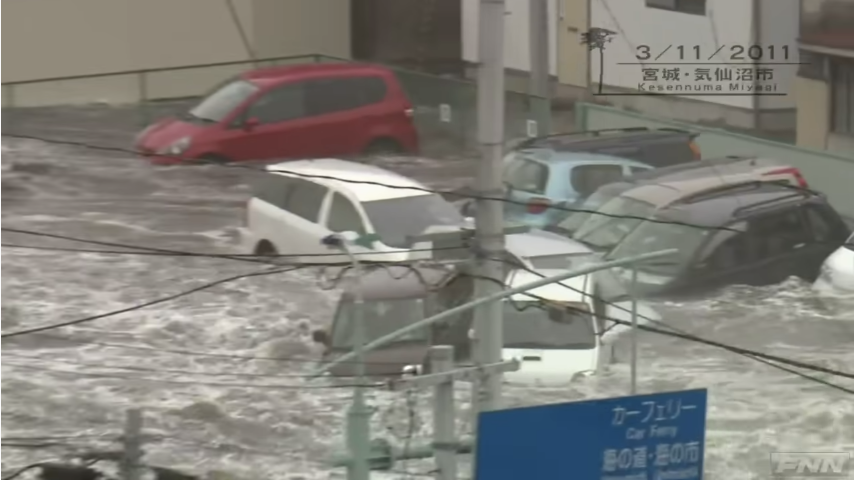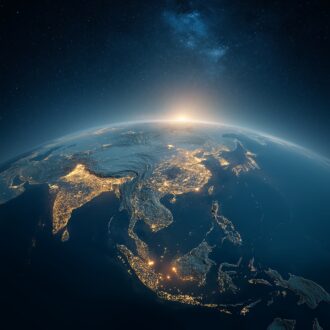Exactly ten years ago, the eastern coast of Japan was struck by the most powerful earthquake in the history of Japan with a magnitude of 9. Within minutes, a tsunami struck coastal cities, and a short time later there was a nuclear disaster at the Fukushima Daiichi nuclear power plant, which is recognized as one of the worst in the world.
The plant’s systems picked up the earthquake signal, automatically shut down the nuclear reactors and started emergency cooling systems. But a giant, nearly 15-meter-high wave breached the barrier, flooding the plant and damaging the cooling systems, resulting in a release of radioactive materials.
Authorities immediately delineated the boundaries of the contaminated area, but they rapidly moved apart as the radiation leak escalated. As a result, within 2 to 3 days, more than 150,000 people had to leave their homes in an emergency.
A decade has passed, and the disaster zone is still desolate, people are afraid to go back, and the cleanup, which has already spent trillions of yen, is far from complete.
The Fukushima accident was one of the most serious in the history of nuclear power.
The chronology of the disaster
The Fukushima Daiichi nuclear power plant is located in Okuma, Fukushima Prefecture, on the east coast of Japan. The distance to Tokyo is approximately 220 kilometers.
On March 11, 2011 at 14:46 local time, a powerful earthquake struck the city of Sendai, 95 kilometers from the plant. Residents of coastal areas had only 10 minutes after the emergency warning of an approaching tsunami to try to escape.
The flooding of the Fukushima basement, where the switchgear, backup generators and batteries were located, happened quickly. The plant was de-energized, resulting in the failure of the emergency cooling system.
Up until March 15, cleanup crews tried to take shifts to prevent explosions in the reactors. At 3 a.m. on March 15, the plant management was informed that the situation had become critical and all rescuers had to be evacuated from the plant, but at 6:10 a.m. a huge explosion rocked Unit 3.
The first order for the urgent evacuation of people from the three-kilometer zone was issued on March 11, and by March 15, the evacuation zone was already 20 kilometers away.
How many people were affected?
There were no fatalities directly attributable to the Fukushima accident. Sixteen workers were injured in explosions and dozens were exposed to radiation. On the day of the accident, three nuclear workers were hospitalized.
However, as a result of the evacuation of the population, including hospitals, about 50 seriously ill patients died. Also, according to medical estimates, there were more than 2,300 premature deaths over the next few years, mostly among the elderly, due to physical and psychological stress. But there is no official link between these deaths and the Fukushima accident.
In 2018, Japan acknowledged a human death due to radiation from the accident for the first time after one of the emergency responders died. He was over 50 years old and had been diagnosed with lung cancer two years before his death. The name of the deceased has not yet been released. His family has been paid compensation.
There are also four other people recognized as victims of the accident, who have been diagnosed with various health problems. All of them are alive.
A report of the World Health Organization released in 2013 says that the accident at the nuclear power plant is unlikely to lead to a spike in cancer rates in the region.
Japanese and foreign scientists are convinced that, with the exception of the area immediately around the plant, radiation risks have been and remain low.
The Fukushima accident has been given the highest rating on the international scale of nuclear disasters. The Chernobyl accident has the same rating. Both tragedies are recognized as the most serious civilian nuclear incidents in history.
As a result of the earthquake and tsunami that led to the disaster in Japan, about 18,500 people were killed and missing. Nearly half a million Japanese lost their homes.
Whose fault?
In the opinion of many experts who understood the situation, the protective system at the plant was not prepared for a catastrophe of this magnitude. In addition, critics say, the plant management and government response was not quick and decisive enough.
An independent investigation initiated by the Japanese Parliament concluded that the accident was caused by human error. The plant’s operator, Tokyo Electric Power Company (TEPCO), was accused of safety violations and lack of a contingency plan.
However, the only criminal case opened after the accident, in which three high-ranking TEPCO managers were accused of negligence, ended with their acquittal in court in 2019.
In 2012, Yoshihiko Noda, then prime minister of Japan, declared that the state would admit its guilt for what had happened. In 2019, a court officially held the authorities partially responsible and ordered the government to pay compensation to the victims.
Ten years later, several towns in northeastern Japan are still closed. It is not yet possible for residents to return there, but the authorities promise to eliminate the aftermath.
True, according to the most average estimates, it will take 30-40 years and require hundreds of thousands of workers to clean up the nuclear waste and more than a million tons of radioactive water still at the site of the disaster.
In 2020, the Japanese press reported that radiation-treated water could begin to be released into the Pacific Ocean in early 2022.
Some scientists argue that this does not pose any danger to humans and wildlife.
But Greenpeace environmentalists insist that even after purification, the water still contains particles that are potentially damaging to human DNA.
Japanese authorities have not yet made a final decision on what to do with the waste. One thing is clear: it will be almost impossible to resume normal life within the radius of the disaster.
Most of the former residents of the region have already settled in other cities in the country and are not going to return, even when it becomes possible, for fear of radiation.


